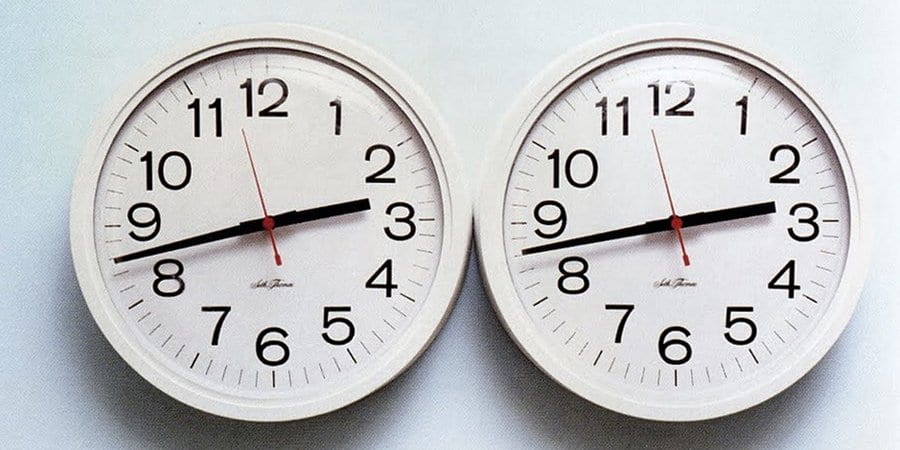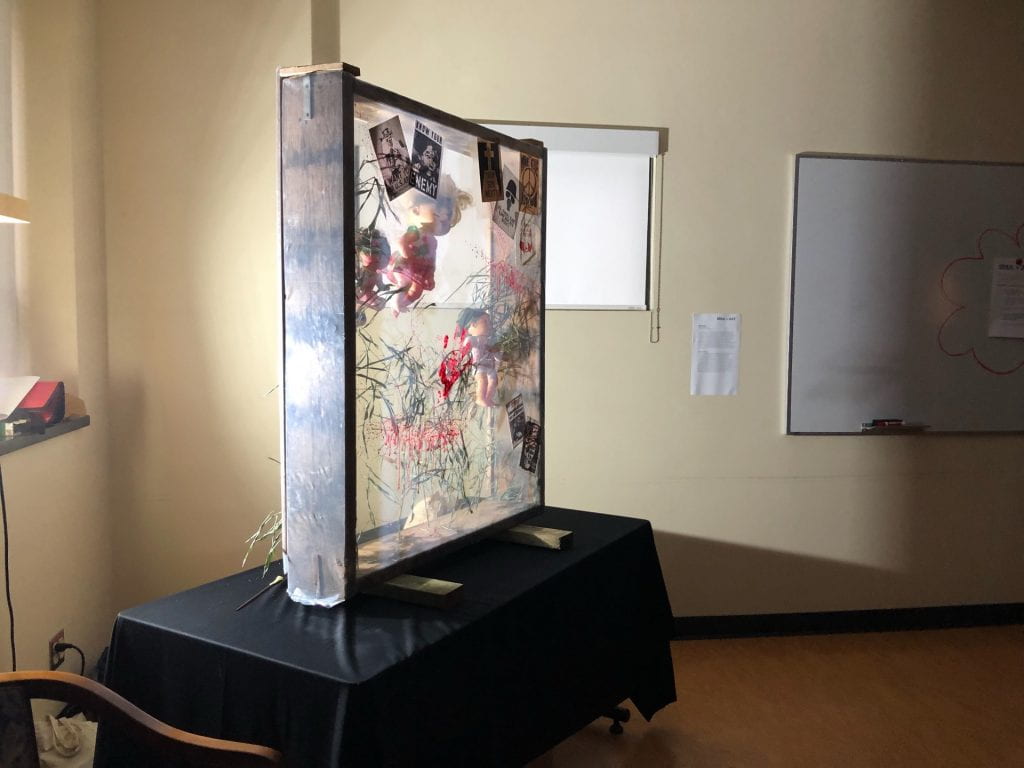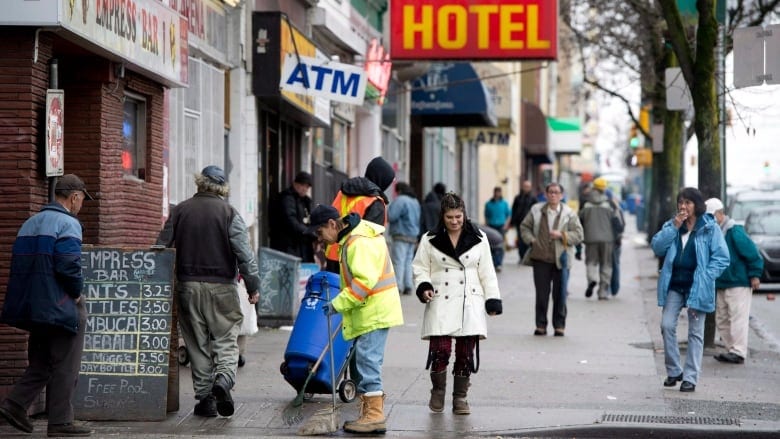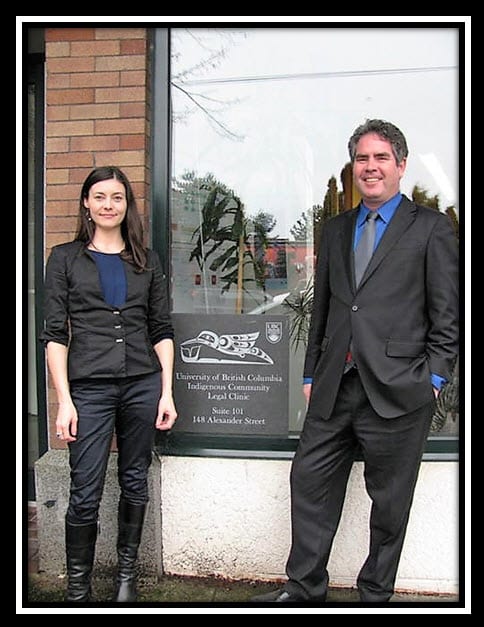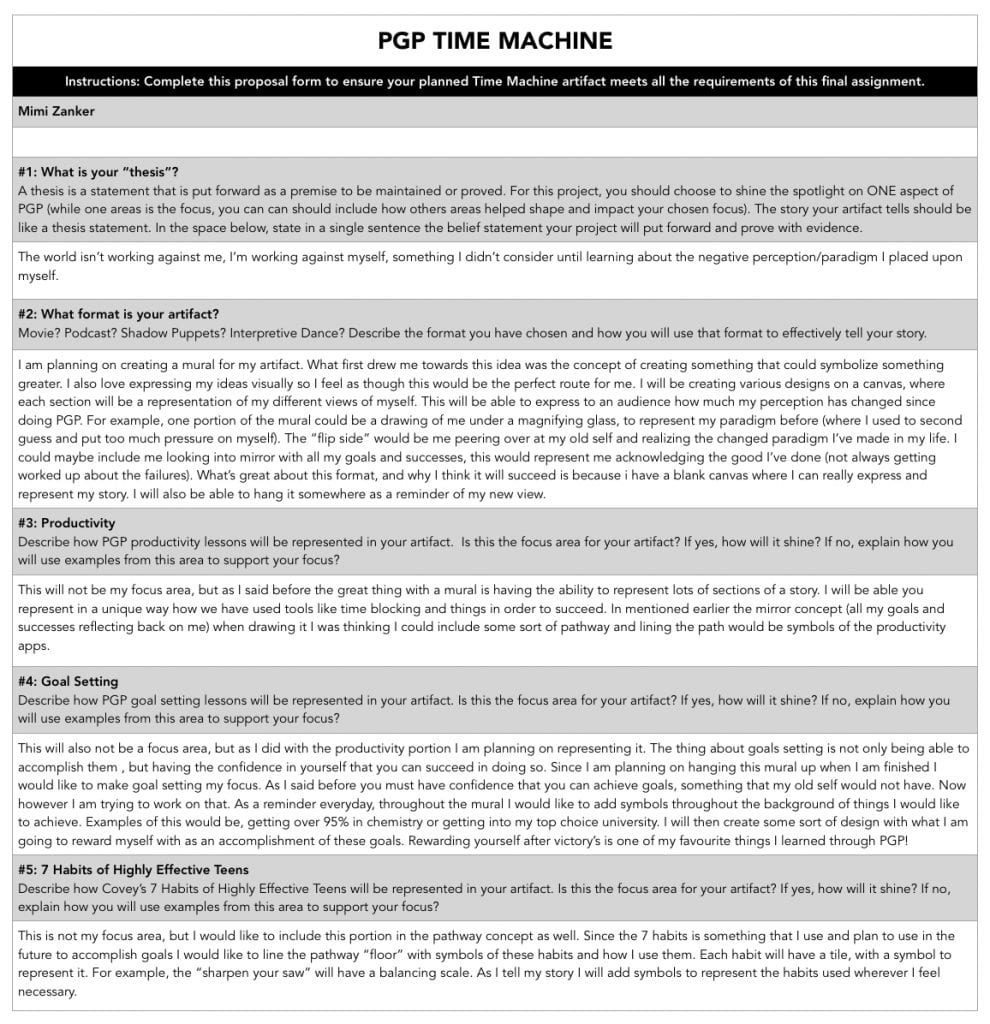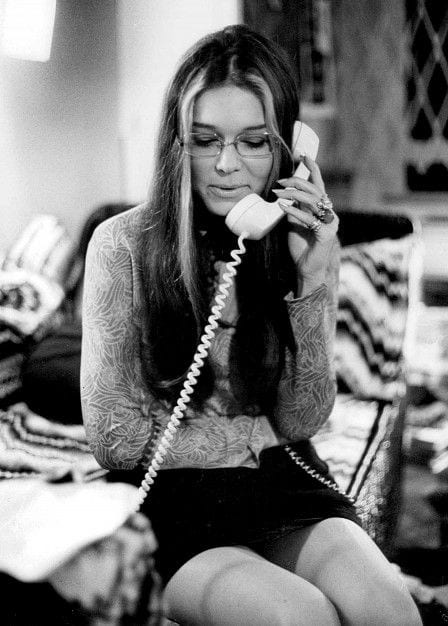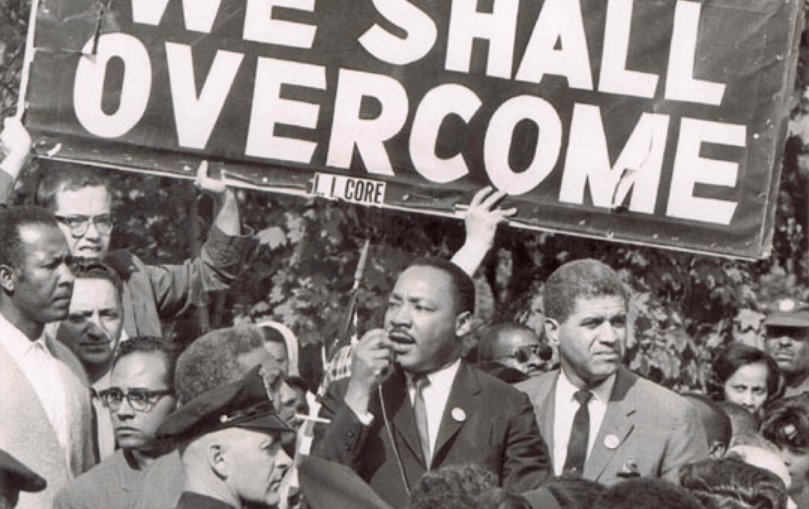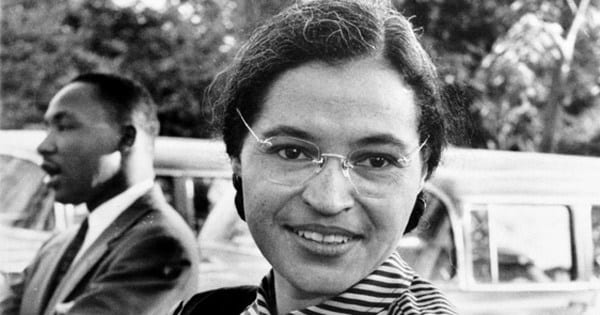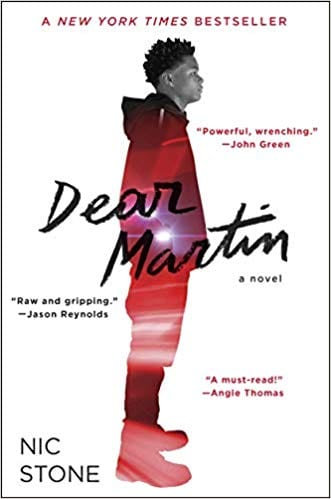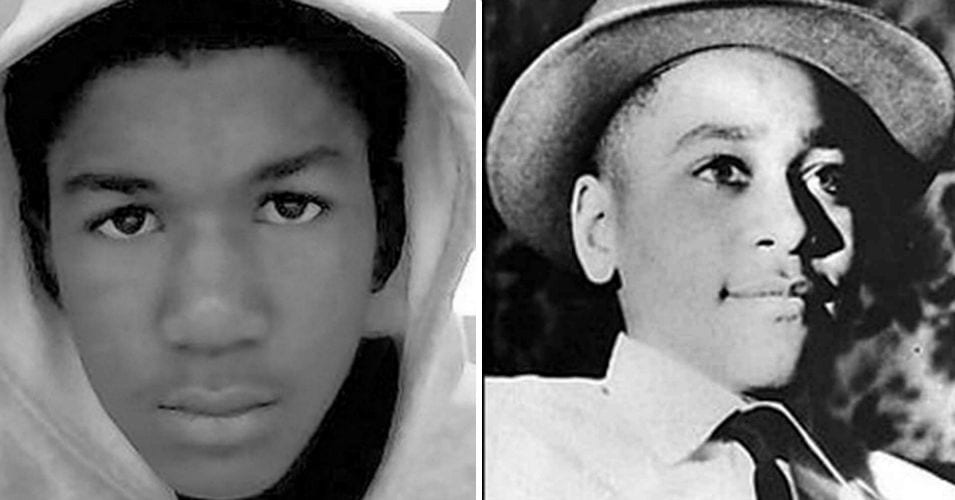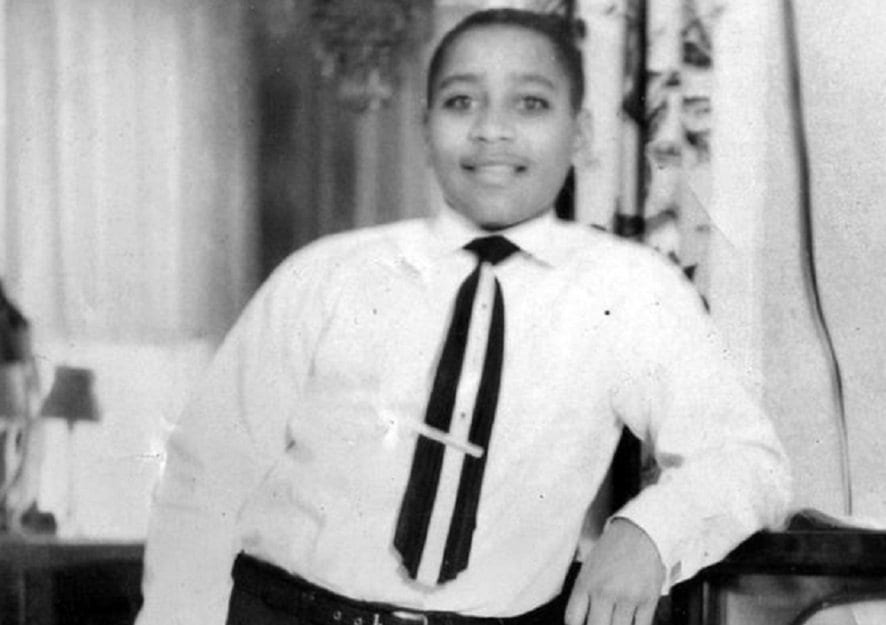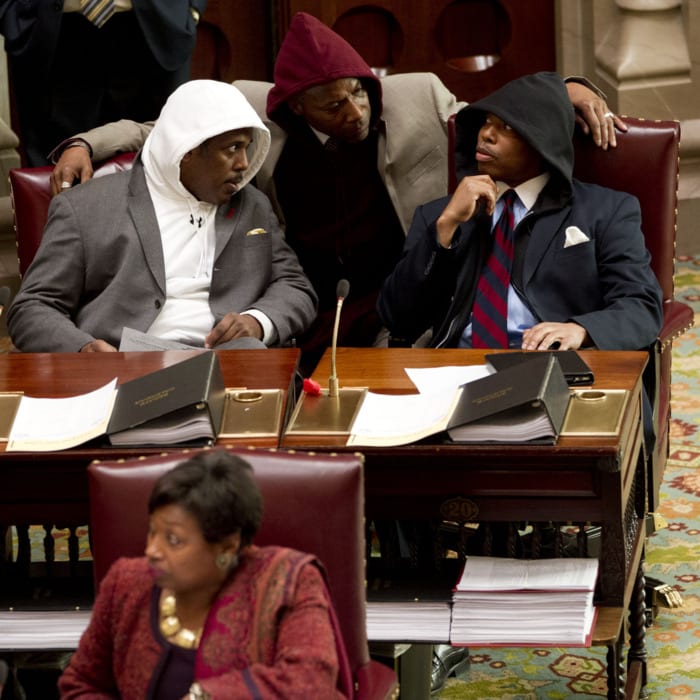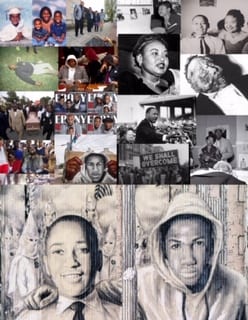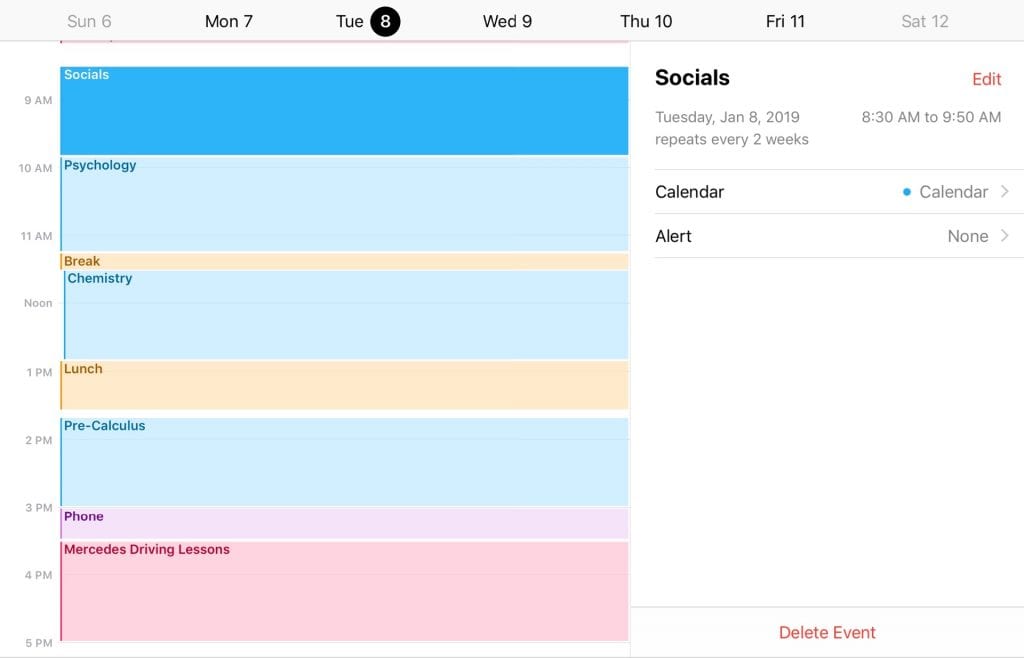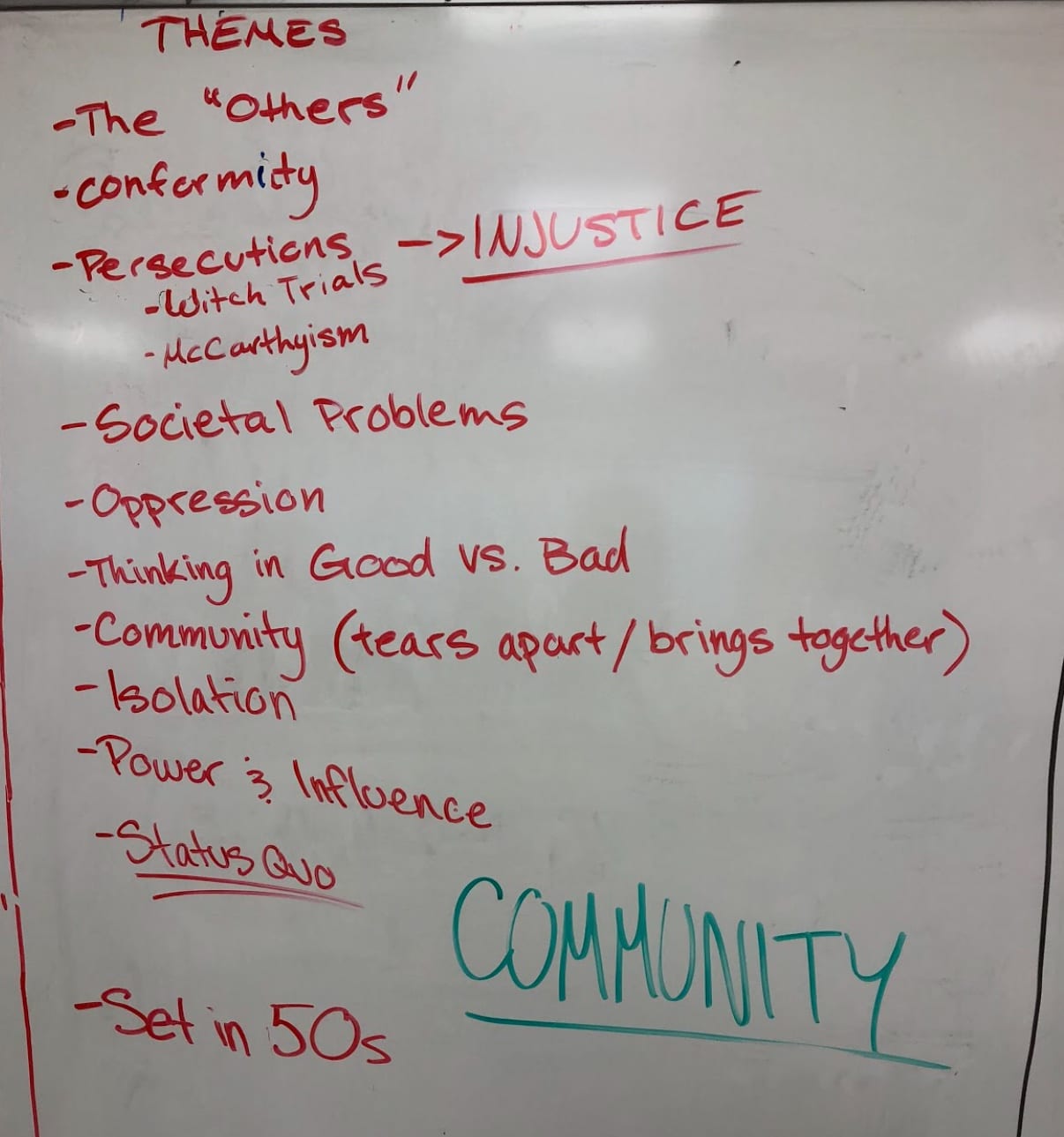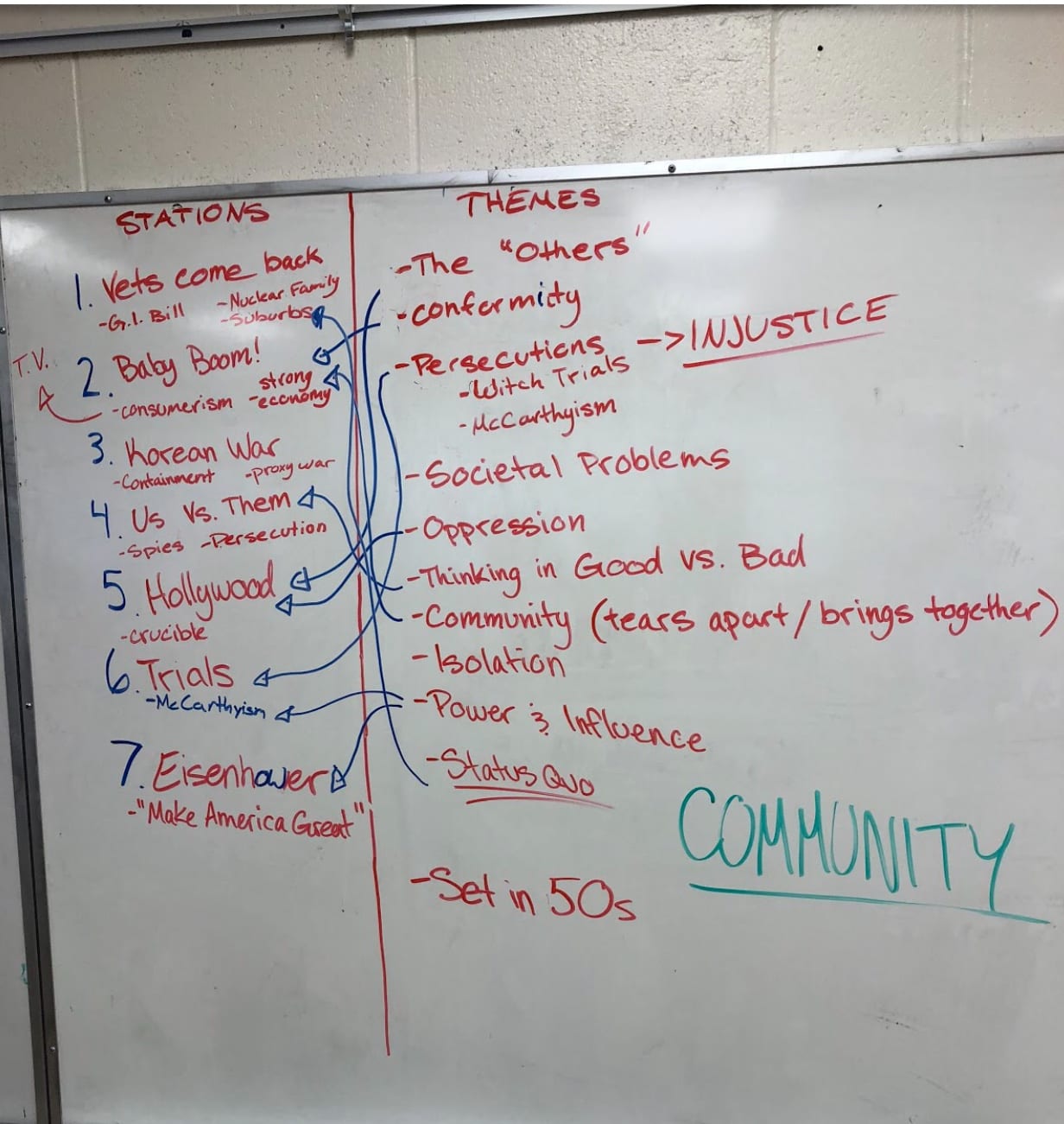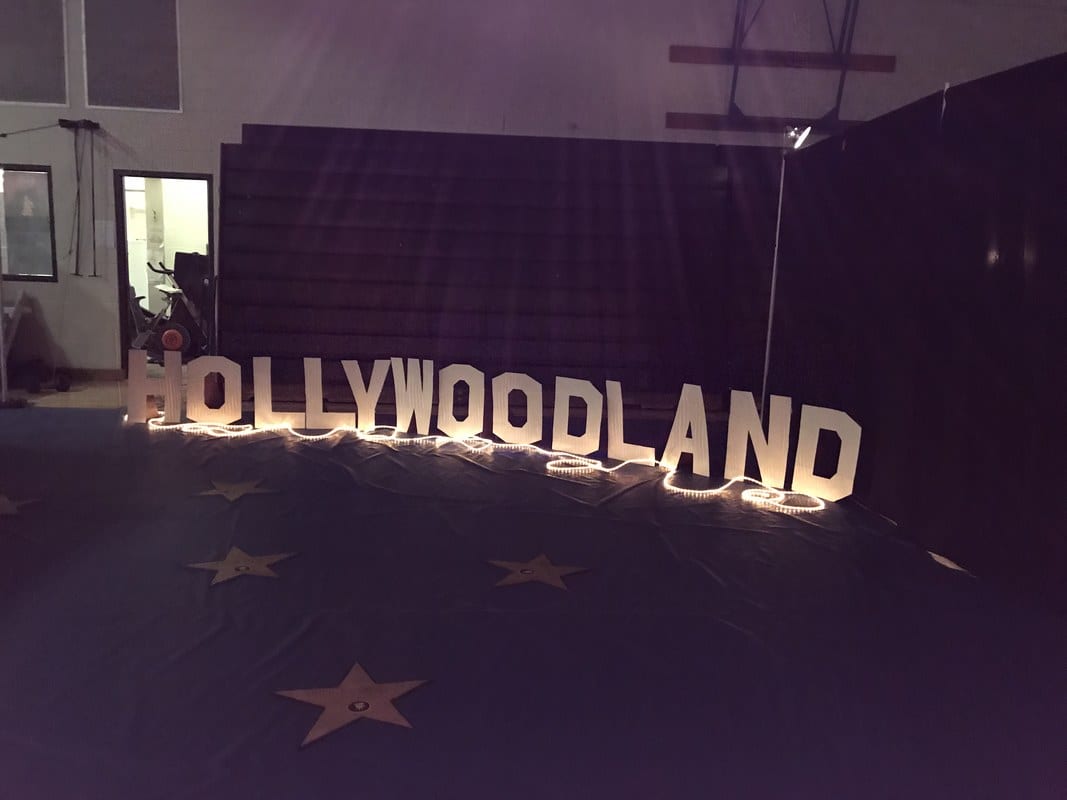Posted on June 27, 2019
Ideas > Art
It’s that time of year again! Blue Sky has come around once again. If you don’t know what Blue Sky is at this point, you’ve got some catching up to do. Click here, here and here for my past Blue Sky projects. This years theme was very interesting and unlike anything we’ve done before. Our end product would be a conceptual art piece that represented a theme of the Vietnam war. Take a look at my final project!
We begun this final unit by learning about conceptual art. Most people are intimidated by the idea of conceptual art, it almost seemed like a very mature form of art. At first glance conceptual art can seem dumb, or too simplistic (seems like a child could make it). Conceptual art is really about the meaning or idea behind the art, which makes it that much more interesting. Here’s a few famous examples (the clock one is my favourite)…
To become really comfortable with identifying the aspects of conceptual art we visited the Vancouver Art Gallery (and Chipotle… of course)! The artist we focused on was Mowry Bawden. His art is pretty easy to spot, it usually consists of everyday objects that create an interactive piece. Here’s a few examples of his art!
After we finished learning about conceptual art we began looking at the Vietnam war. We split the war into 7 themes (forces that fueled the war, beliefs and misconceptions, leadership, who fought, how the war was fought, propaganda truth and media and, the war at home) for the fluidity of it all. Our teachers were actually on a trip while we were learning about this, so we were given many different resources to power through. We also watched the Ken Burns movie on the war, and took notes. Before they got back we had to divide ourselves into the themes, which would eventually be what we would represent through our art. After lots of consideration and research I chose to do theme 4 (who fought in the war).
Once we got back we did something that we rarely do, take a test! This test was comprised of multiple choice questions as well as a writing and vocabulary portion. I ended up scoring a 9/12, so not too bad!
Now that we knew our themes, it was time to start brainstorming and creating our art. After lots of research and conversations with our teachers we were told to fill out a form with our finalized ideas. Click on the bar below to find out my aim for the art!
Building everything…
I began by going thrifting to buy some dolls, I found out in a very inconvenient way that one of them talked french (it was very creepy). I then created a 3×4 wooden shadow box, and was planning on covering it with plexiglass. After finding out plexi glass is like 150$ I decided to go down a different route. I found a shower curtain that was pretty clear, and stretched it out on the shadow box using lots of clamps. Then on a very sunny day I laid it out on the lawn, until it became pretty malleable. This allowed me to stretch it out even more with clamps, witch I then just screwed into the sides. Finally I hung my dolls, splattered blood everywhere and plastered some posters onto the front.
At the exhibition we were split into groups by how similar our projects were. I ended up being in a group with Izzy and Simon (my two favourite people). Since our teachers wanted the rooms to look like a gallery, we decided to make things pretty simplistic. We just put up some black curtains and brought some outdoor lights and turned off the fluorescent school lights.
I think this project gave me a deeper appreciation for conceptual art. I found it very difficult for myself to create something so simplistic that represented such a deep idea with so many emotions and events. Overall I’m happy with the outcome, but feel like I could have worked on it more and really fine tune everything. That’s it for now, see ya next year!
Posted on June 16, 2019
TPOLs 2019
Well, it’s that time of year again and tPOLs are upon us. I started this year with a lot on my plate, but ended it very successfully. Through projects I have grown as a learner, and fined tuned many skills. This has resulted in a high level of learning and critical thinking.
The first thing I would like to talk about is the “World on the Brink” post. I was very proud of my final project and felt I grew from it immensely. For this post we needed to include our research essay as well as a connection to a social change. This deepened out thinking and forced us to connect events and research. I was personally very proud of this post because I used lots of different perspectives and primary resources to pack together a very thorough research assignment.
When I was putting together the post I watched “A Bunny’s Tale” the Hollywood film about Gloria Steinmans undercover work at the playboy mansion. I also read all her original journals and articles posted in the newspaper, as well as some interviews she did. Instead of purely reading a wikipedia article or a biased website, I attempted to live through the past to really grasp the perspective of Gloria. This deepened my learning and lead me to connect more events and social changes like MLK and the Civil Rights Movement. This skill is great to adapt at my age, and will be highly helpful as I transition grades.
In January, after learning about the Civil Rights Movement we were completing a video project about individual that changed a system, in Canada. The project was a partner project, therefor we had to utilise our teamwork skills and responsibility skills. I was partners with Calum, and we decided to focus on those changing the DTES, and how a community can change a lot.
Since our issue was so close to home, we decided we had no excuse to not find interviews to support our video! After some digging, our teacher told us she found a perfect contact. After doing some research on the organization we were really inspired about what they were doing/trying to accomplish. We were going to interview a lawyer from the Indigenous Community Legal Clinic. The legal clinic also took on a few students from the Peter A. Allard School of Law at UBC, so we were also hoping on interviewing a student. The indigenous community law clinic takes on lots of pro bono cases, and focus on giving back to a minority group that have been discriminated against for centuries.
Since we are battling with the idea of systems, we thought it would only be fair to gain more knowledge about our justice system. We first went to the bail court, then to the conviction court. We were only there for about an hour and a half, but I could have stayed there all day. It was so interesting to me, and also saddening to hear all the stories of those convicted. Most of them were not first time offenders, and were also living on the streets. Through this experience I saw with my own eyes how difficult it is to support yourself mentally and physically when your are living on the streets. All people really need is support.
At this point the project was relying on an interview for most of our evidence and resources, so we really had to pick up our game. We had to contact the legal clinic, set up a date, create substantial interview questions and do lots of pre-research. This put a lot of responsibility on Calum and I, and pushed us out of our comfort zones. I think this is a very important ability you should have when it comes to projects. Because the only way you can really grow though projects is pushing yourself outside of your comfort zone.
As always, there is room for improvement. This year I would like to work on my “first drafts”, whether it be projects, essays or assignments. I find a lot of the time I view my first draft as a free pass, something to just hand in before the due date. I would like to switch that perspective and view my first draft as my final. As I said before you can’t grow as a learner without pushing your comfort zone.
During our PGP course, we’ve covered everything from goal setting to effective habits and productivity. Although all useful skills to know for the future, the most important thing I learned was “The world isn’t working against me, I’m working against myself”. I really didn’t consider this until we began learning about paradigms at the beginning of the year. I realized that my paradigm of myself does not benefit me at all. I spend almost all my time critiquing myself and focusing on all the things I do wrong. This creates a negative perception of myself and really lowers my self esteem. If I continue down this path I will never have enough confidence to take chances or accomplish goals I put my mind to. This is something I also strive to improve before the end of next year. If I can manage this negative paradigm of myself, I will be able to accomplish my goals and become much more successful in the new year.
With all my skills I’ve improved and the growth I have made I believe I will have a successful final year. On top of that, through my PGP course I have learned to timeblock and manage my life. With the busy schedule I’ll have, this will be a huge asset. This is why I feel I am ready to advance to the next grade level.
Posted on May 26, 2019
PGP Time Machine
I’m sure at this point your familiar with my PGP course. Since it’s almost June, it’s that time of the year to start wrapping up what we’ve learned. We’ve covered everything from goal setting to effective habits and productivity. Although all useful skills to know for the future, the most important thing I learned was “The world isn’t working against me, I’m working against myself”. I really didn’t consider this until we began learning about paradigms at the beginning of the year. I realized that my paradigm of myself does not benefit me at all. I spend almost all my time critiquing myself and focusing on all the things I do wrong. This creates a negative perception of myself and really lowers my self esteem. If I continue down this path I will never have enough confidence to take chances or accomplish goals I put my mind to.
“Paradigms are like glasses. When you have incomplete paradigms about yourself or life in general, it’s like wearing glasses with the wrong prescription. That lens affects how you see everything else.”
-Sean Covey
As always (since this is a project based course) I created an artifact to represent my learning. I tied in each aspect of what we’ve learned and the most valuable thing I will take away from this course all through a reflective painting. As I take you through my art piece, I will touch on each topic we have learned this year.
Take a look!
This painting was created by me! It took lots of effort and planning, overall I feel like the artistic side could have turned out better, but i’m really proud of the actual idea behind it! We begun this whole process with a pitch form, this way our ideas could be laid out and approved before we begun. My pitch form was actually a lot different than the way the piece turned out (which I didn’t plan). I felt like my old idea may have been more negative and thinking of the past, where as the painting now is more thinking of the future. That may not make any sense now, but I promise it will by the end.
This painting could have really helped me at the beginning of the year. It could have been a constant reminder to never doubt myself. Everytime I studied for a big test, handed in an assignment or got ready for a big soccer game it would have been a reminder of who I am. Since I am in grade 11, having the confidence to set more goals would have been really helpful. I would have explored more universities, programs and set my standards higher. Although I didn’t know this at the beginning of the year, I do know which means my grade 12 year is about to be a whole lot more successful! The great thing about the art piece is that I can now hang it in my room as a reminder every morning and night of my positive paradigm.
Let’s get into the nitty gritty, starting with the binoculars. This portion of the art piece is all about goal setting, starting with mine. Each symbol represents something a more positive perception of myself can earn me. With grade 12 around the corner I am really worried about grades and the courses I am taking. I love chemistry but am worried I won’t be able to attain a high enough grade for it to count towards anything. This is a negative perception I would like to turn into a positive one by realizing that if I put my mind to something I can accomplish it. This is what the chemistry beaker, A+ sheet and science bubble represents. The Chinese symbol represents independence, something I lack at times. I sometimes don’t give enough credit to myself and always make excuses for why something was successful. I would like to flip that view and start gaining more independence in my achievements. Finally the airplane and UBC logo represent my future. At this moment, I am not sure what I want to do with my life which is something that I can sometimes view negatively. I would like to change that perception and focus on the things I love to do instead.
The next two aspects are productivity and effective habits. These two topic were a large focus of PGP this year. This is represented by the application icons along the pathway to success. They are meant to show how much they help in my journey to achieving my goals. The Calendar icon is a symbol of time blocking. This is a very effective habit I have learned over time, and I still use to this day. It has helped me be more efficient, create better work and open up time for the things I love to do. The Things icon represents organization, and how we have learned to use it in our everyday life. Being able to have all my due dates, goals appointments and a To Do list in one spot has helped me so much in the long run. Having this application can organize my life, which means making more time to work towards my goals. Finally BaseCamp, something I use in my everyday life to retrieve information and learn. This represents an effective habit “sharpen your saw”. It’s meaning is to balance your knowledge and have a broad understanding of the world, while also being mentally stable, being healthy and having strong relationships.The habits essentially helps you become more balanced in your life. I thought basecamp would be the perfect icon because it’s where I get all my information for my classes and learn about how to have goals, effective habits and balancing my life.
The Overall this course I know will help me in the long run. Everything I’ve learned will help me achieve my goals, get into university and hopefully start a successful career. This course will most definitely help me in my journey to becoming my best self, and achieving the things I wish to see in my life. With all this in mind I would like to work towards switching my lens, and how I perceive myself. Now I know my strengths and weaknesses, both tools I can use to work towards my goals. Hopefully this experience, reflection and my art piece can help me gain more confidence and create a more positive paradigm of myself.
Posted on May 3, 2019
World On The Brink
The 1960s were simply a whirlwind of events, there were social and political changes left and right. The ever-changing society was filled with chatter of the first man in space, and woman changing the rules. Among them, Gloria Steinem, an independent role model for young girls through the sixties and even now. Gloria Steinem was responsible for making worldwide advancements by pushing the boundaries of journalism and exposing women’s rights. She challenged a system that has not supported minority groups for so long. Making this social change, among many others (environmental, civil rights, labour laws) has affected the political world, bringing the world to the brink.

As a woman in the 60s (and centuries before) your life was planned out like a blueprint for a building. You were sketched into society, pushed through doors and cornered into a life you don’t belong in. As you enter the world as a young woman you were told to marry, buy a house, have kids, cook and clean. You could not have a credit card, serve on a jury, go on birth control, go to an ivy league school or experience equality in the workplace.
People (especially woman) were getting inspired, there were movements happening left and rights. The civil rights movement was sparking people to challenge the system where equality was due. Gloria Steinem was a perfect example of somebody challenging a system, therefore pushing it to the brink. Her natural writing ability, leadership, strength and attitude allowed her to defy the standards for woman in her age. As a journalist gloria Steinem had many successful articles, one of her more famous ones being “A Bunny’s Tale”. This article was groundbreaking, it discussed inequality, sexual harassment and the lives of the bunny’s. At its core the article is truly about Steinem’s belief that the sexual revolution will fail if men are the only ones allowed to define it. The world was taken back by the article and the jaw dropping statements it made, but as Gloria puts it…
“The truth will set you free, but first it will piss you off”
So what did this change? How was it a beacon of hope for woman all over the world? This article sparked a change in how playboy ran their business, after it was released Hugh Hefner was scrutinized. Although this was great news to the Bunnies working there, that wasn’t the success. It was really that, for the first time a woman was able to challenge a man in power such as Hugh Hefner. Gloria proved to the world what they thought a woman wasn’t capable of.
At this point the world was changing at a pace that some were not able to keep up with. Gloria brought to light how poorly woman are treated, Martin Luther King began a black rights movement, environmental laws were changing as well as labour laws! Social change was most definitely in action, but what about political? Well, if the social world is changing so does the political. For example, after the women’s rights movement (sparked by gloria and many other talented woman) many laws were put into action like the Equal Pay Act of 1963. The same thing happens with the civil rights movement, the Civil Rights Act of 1964 was passed due to the movement. The world was changing socially and politically. The space race was beginning, and the soviets had a satellite and man in space. This pushed our world even further, making the 60s the best of both worlds. Read all about how the world was at its tipping point in an essay I wrote!
You see, with social change comes political change. Laws and structure is what keeps our society running so when it’s challenged, it changes. People like Gloria and Martin push the world to the brink, to its tipping point. They put the world under pressure until it snaps and has no choice but to change.
Works Cited
Biography.com. “Gloria Steinem Biography.” The Biography.com website, A&E Television Networks, 2 April 2014, https://www.biography.com/activist/gloria-steinem.
McLaughlin, Katie. “5 things women couldn’t do in the 1960s” CNN, 25 August 2014, https://www.cnn.com/2014/08/07/living/sixties-women-5-things/index.html.
Kelley, Shannon. “5 Ways Gloria Steinem Made Life Better for American Women.” TakePart, Participant Media, 25 March 2014, http://www.takepart.com/article/2014/03/25/5-ways-gloria-steinem-made-life-better-women.
Posted on March 7, 2019
We Shall Overcome
What you just watched was my final project for this past unit! The topic of that video was all about the Downtown Eastside (DTES) and how individuals knitted together can create a community of people willing to change. Although this is a very important topic, it wasn’t actually what the class was focusing on. We were actually learning all about the Civil Rights Movement, something incredibly important to American (and worldwide) history. Our driving question for this unit was…
“How can the actions of an individual change a system?”
You may be wondering about the title of my post, does it sound familiar? It was actually the name of a classic song that was sung during a strike of tobacco workers in South Carolina. Soon after it became the unofficial anthem for the Civil Rights Movement. If you reflect on the statement, It’s words are actually very powerful. They helped many persevere through the tough times of the movement and even today in my opinion, shows a sign of unity and strength.
The civil rights movement was definitely an eye opener for how people were treated back then and even today. As much as the civil rights movement brought justice and equality in terms of law (civil rights act of 1964 and the voting rights act of 1965) the mindset of individuals still needs to change. I think this was something important that people really need to understand, that change still needs to be made.
At the beginning of the unit we reviewed pre-1950s. This included…
President Abraham Lincoln issued the Emancipation Proclamation on January 1, 1863. The proclamation declared "that all persons held as slaves" within the rebellious states "are, and henceforward shall be free.". Despite the act, the Emancipation Proclamation was limited in many ways. It applied only to few states, leaving most of the south as slave states.
Source: https://www.history.com/topics/american-civil-war/emancipation-proclamationAfter touching on pre-1950 we went on to Brown vs. Board of Education, the murder of Emmett Till and the Bus Boycott. While learning about these topics the thing that stuck with me the most was that everything was purposeful. For example, I always thought that the bus boycott was started by just Rosa Parks. In my mind, she was fed up with the system and decided to stand up for what was right. Turns out that I was wrong, the whole event was planned. In fact, a young girl named Claudette Colvin had actually already done something similar to Rosa Parks first. She ended up not being a strong candidate for the movement because of her age, and the fact she became pregnant just a few months later. The NAACP was looking for a strong candidate (like Rosa Parks) that could represent there movement. This really changed my perspective on the movement. I think it made me appreciate the ingenuity behind everything. Although now that I am reflecting on this, I guess it makes sense that the civil rights movement wasn’t just a string of coincidences.
To expand our knowledge and reflect even more on what we were learning, we had to make reflective posts. These posts had to make a connections to our modern day and the civil rights movement, all while answering the driving question. I decided to focus mine on the murder of Emmett Till and Trayvon Martin. If you would like to read about that, click here. I think writing this post really brought up the same idea as I was talking about before. That, thanks to the civil rights movement the laws have changed but people’s mindsets still need to change. Something that I find really powerful to understand, that there’s still change that needs to be made.
On top of writing this post we also participated in weekly Socratic seminars. These seminars are supposed to help us reflect and think deeper through discussions. It was named after the famous philosopher, Socrates. Each seminar we would discuss a piece of text, a documentary, novel or film. For the first few seminars we used the novel “Dear Martin”, by Nic Stone. The first time we tried this seminar it was really rough. I think we hadn’t accepted the concept that we needed to dig deeper and go below the surface (not just plot, characters and opinions). A good piece of advice we were given was to ask questions, because in reality that’s where all the good discussions were derived from. The next few seminars we used films (The Long Walk Home) as well as documentary’s (Viewers Like You). I felt like it was important to have both, because with the documentary we got the stone cold facts and truth, whereas with the films we were able to connect and empathize with the characters. This taught me the importance of using multimedia to collect evidence, it’s essentially like getting different perspectives. Through these seminars I also attained useful skills and gained experience with seminars that I can hopefully use in my post secondary education.
So by now your probably wondering what that project at the beginning was all about, right? Well, as I mentioned before it was our end of unit project. The idea was we would get into partners and create a video of a Canadian individual that changed a system, and relate it to history and present day. My partner and I (Calum) decided to actually focus on community’s knit to together by individuals who are willing to make a change. We wanted people to understand our thesis, that one individual can spark change but it takes a community to make the change. We thought the perfect example of this would be the DTES (Downtown Eastside).
Since our issue was so close to home, we decided we had no excuse to not find interviews to support our video! After some digging, our teacher told us she found a perfect contact. After doing some research on the organization we were really inspired about what they were doing/trying to accomplish. We were going to interview a lawyer from the Indigenous Community Legal Clinic. The legal clinic also took on a few students from the Peter A. Allard School of Law at UBC, so we were also hoping on interviewing a student. The indigenous community law clinic takes on lots of pro bono cases, and focus on giving back to a minority group that have been discriminated against for centuries.
Before the interview we did lots of background research and formulated many strong questions that we could get the most information from. We also created a storyboard using numbers so we could narrow down on what we needed for each section of the video.
Once we arrived at the clinic we were greeted by Mark Gervin (man in above picture), our interviewee. We sat down and discussed the purpose of our video and what we wanted to get out of the interview. As we were discussing the clinic, he told us a story about what they were trying to accomplish. The story is about a humming bird that tries to put out a wild fire. As all the animals are fleeing the forest, the hummingbird carries water from a river to the fire in his beak. The animals tell him to fly away, and there’s no point. He responds by saying he’s doing what he can. This really helped me understand the situation. The wildfire is the injustices that have taken place, the hummingbird is obviously those individuals (Mark, the clinic and students) that are doing all they can to help. This really put into perspective how damaging the years of racism, segregation and discrimination is on today’s society. Yes, the rules have changed but it doesn’t mean people aren’t still effected by what happened. With the help of communities, we can slowly help put out the fire.
Mark and the student (shay) were both very gracious to let us interview them, and we appreciate the opportunity they gave us very much. With their help we were able to make this amazing first draft!
As always, revisions are needed. But before we finished our final draft we decided to take up yet another opportunity and visit the community courts. Since we are battling with the idea of systems, we thought it would only be fair to gain more knowledge about our justice system. We first went to the bail court, then to the conviction court. We were only there for about an hour and a half, but I could have stayed there all day. It was so interesting to me, and also saddening to hear all the stories of those convicted. Most of them were not first time offenders, and were also living on the streets. Through this experience I saw with my own eyes how difficult it is to support yourself mentally and physically when your are living on the streets. All people really need is support.
For our final draft we shortened the interview clips, removed some excess unneeded info and narrowed down on our driving question…
“How can a community of individuals make small differences that can change a system?”
In conclusion, I have learned so much over these various topics. Each assignment has taught me something different that I can connect to other situations. Like through the civil rights movement I learnt all about the laws and events that happened but I also learned that although change was made, our systems and mindsets still need to be changed. Through the Socratic seminars I learned the importance of multimedia and primary sources, as well as how to look for deeper meaning. Through the bus boycott I learned that most things that have meaning are purposeful. And finally for the video project I learned that a community knitted together by individuals willing to make a change can make a difference in a system. All these topics may not relate directly too each other, but the learning I did can apply to everything. This is something I’ve come to realize is very powerful. Overall I discovered so much, and thoroughly enjoyed learning about the civil rights movement.
Here are some powerful images that speak a million words. I came across/collected most of these over the past few months while completing this unit. Just wanted to include them at the end to keep you thinking about the effects of the movement, and what happened.
Posted on January 28, 2019
The Story of Trayvon Martin & Emmet Till
Today I will be answering the question of “how an individual can change a system”. Through the stories of Trayvon Martin and Emmett Till we will see how tragedy can spark protest against a system, and challenge how that system works.
Their Stories
How They Changed The System
Mamie, Emmett’s mother had made a very important decision after Emmett’s death. She had decided that his funeral would be open casket. The story of how Emmett Till was brutally murdered would not be hidden to the public eye. In the days leading to the funeral, Emmets’s story and pictures of his body were released in a magazine called “jet”. The media picked up on the story and news travelled fast. Two weeks after Emmett was buried the two defendants (Milam and Bryant) were put on trial in a segregated court house in Mississippi. The NAACP searched for witnesses who were willing to risk their lives in order to find justice. After some time they were able to find witnesses who would give their statements, then flea the state (in case the KKK went looking for them). On September 23rd, the two were found not guilty because the state had failed to prove the identity of the body. This sparked national outrage, and some 100 days after the murder, Rosa Parks refused to give up her seat on the bus. Reverend Jesse Jackson told Vanity Fair (1988) that;
“Rosa said she thought about going to the back of the bus. But then she thought about Emmett Till and she couldn’t do it.”
Eight years later, on the anniversary of Emmett Till’s murder, Martin Luther King delivered his iconic “I Have a Dream” speech.
Without the tragic events of Emmett Till’s death, the bus boycott could’ve never began the way it did. The movement that changed a system in its entirety was propelled by the idea that Emmett was part of a bigger plan.
After George Zimmerman was found innocent, a group of African American woman began a movement called #blacklivesmatter to respect lives like Martins. Today the movement is known nation wide, and has the potential to become this generations Civil Rights Movement. The movement organizes protests addressing racial injustices.
Martin was slain by George Zimmerman because of an assumption he made. He saw a young African American teen, with a hoodie on, walking around at night and immediately made the assumption he was up to no good. To protest against this racial profiling, thousands of people posted on social media pictures of themselves wearing hoodies. Below is a famous picture of Trayvon Martin’s lawyers supporting the movement by wearing hoodies to court.
Trayvon Martin’s tragic death has sparked a new civil rights movement. Today, people across the nation are protesting under the movement name #blacklivesmatter, inspired by Martin. The movement is revealing the corrupt system America is being supported by each day. Without the injustices that took place, none of this would have been as powerful as it was.
Comparisons
Below is an image I created of Trayvon and Emmett. The collage shows some differences and comparisons so we can further analyze how these two individuals changed systems with their tragic stories.
On the left side of the collage we see a glimpse of Trayvon Martin’s story, and on the right we see Emmett Till’s story. Both sides include pictures of parents effected by the tragedy, and an open casket. The important part of their stories is really how they sparked outrage and protest through the injustices. For Trayvon it was the #blacklives matter movement, and for Emmett Till it was inspiring Rosa Parks and Martin Luther King. This collage really portrays the similarities between the two stories. I wanted to create this as a way to show people that although there has been change, there has not been enough. Minority groups are still treated the same way as they are before, the laws have changed but the mindset of people hasn’t.
These two stories of tragedy are very similar, they both challenge a system by sparking protest. Emmetts story propelled and inspired Dr. King and Rosa Parks to challenge the system. Trayvon has inspired a generation to stand up for black lives, to challenge the system. The two boys were separated by a thousand miles, two state borders, and nearly six decades, but were somehow still able to connect and inspire people all over the world. Their stories will be remembered for generations to come as the inspiration to the greatest Civil Rights Movements in history.
Posted on January 18, 2019
MPOLs 2019
How are you going to progress as a learner before the end of the school year? A question that gets asked a lot in our classroom. In order to answer this question we must take into consideration some aspects of learning: revision, teamwork, responsibility, and production of high quality work.
I feel like this past term and a half I have demonstrated all those aspects, as well as good work ethic and habits in my PGP and Humanities courses.
A perfect demonstration of all of those learning aspects is the winter Exhibition. Click here to learn more about the process. During the exhibition I volunteered to be a DRI (directly responsible individual), this was definitely a step outside of my comfort zone and showed great leadership skills. While I was DRI my main focus was making sure everybody was happy and was working as a team (teamwork skills) because when we worked together our work habits, ideas, and results were way better than if we would have done everything on our own. When we brainstormed, the whiteboard would be filled with great ideas at the end of every class. We then took those ideas and were able to class critique them, and revise until they were almost perfect. By taking these steps we were able to produce high quality work.
A few months ago we were reading the crucible (an act) and along with the reading we had to make “creative creation” blog posts. If you want to see those click here, here and here. I was actually very proud of these posts, they showed creativity, good work ethic and high quality work. Each post I used evidence by drawing from experience, used creativity to express my point and used revisions to make sure my spelling and grammar was correct. For example, for my second post I wrote about the influence of social media and how it was very powerful. I used evidence from my life to support my point. This made my writing more powerful which resulted in producing high quality work. I also learned that more isn’t always better, I tried to make my posts short but interesting. I’m slowly learning to be more concise about what I’m trying to say, so hopefully this post won’t be as long as others.
Now that we’ve discussed Humanities, let’s move onto PGP. So we’ve started doing this thing called “time blocking”, at first I wasn’t sure about it but I actually tried it and found it quite helpful. The one week I did it, it improved my work ethic and habits. I found I was focusing more at the task at hand because I wasn’t worried about what I needed to do. I also was getting less distracted by my phone or Netflix because I had blocked time to do that. This improved the habits of mind #1 and #2 (persisting and managing impulsivity). I haven’t been able to practice my time blocking skills to much, but I’m definitely willing to attempt it again.
My last example of learning was a FAIL (first attempt in learning), it was for my PGP course. Before the holidays we were given a book called “what do you really want?”. It was all about goal setting and how to achieve those goals. Throughout the book we had to fill out forms, make dream boards and journal about our successes and failures. I completed everything ahead of schedule, and was pretty thorough. But if I’m being totally honest I wasn’t satisfied with my work nor did I feel like I was being very truthful about the goals I wanted to set. I felt like I was thinking more about the goals I should have like where I should go to university, and reading more. I feel like this is because I wasn’t in the right mindset, or felt like I just needed to get it done so that I wouldn’t have to worry about it. Regardless, I feel like it was a FAIL which is perfectly fine because all that means is I have another experience to learn from.
So know that you’ve read a little about the learning we’ve done, it’s time to get back to the real question at hand: How are you going to progress as a learner before the end of the school year? I can know use everything I just wrote about as evidence to answer this question.
The exhibition will help me as a future learner to gain more confidence in my leadership ability’s. I think the experience will help me understand my weaknesses and strengths so that in the future I can progress as a learner. As for the crucible creative posts, I will be using them to set a standard for my creativity. I will try and either hit that standard of creativity or attempt to surpass it, by the end of the year this will help me progress as a learner. For the time blocking, I am planning on using it this term so I can improve my organization and time management. This will let me do more things I am passionate about, or give me more time to perfect my work. Finally I will learn from my FAIL by making sure those same mistakes don’t happen again. Hopefully all those learning experiences combined will allow me to progress as a learner by the end of the year.
Posted on January 11, 2019
Carousel of Communism
2019 is here! What does that mean? Another year another winter exhibition. This years exhibition was pretty eventful and full of emotional roller coasters. All in all, I am immensely proud of not only my class but of myself as well. During this project I stepped out of my comfort zone (something I rarely do) and nothing but good things and learning opportunities came my way. Anyways, enough blabbering. Lets get to the project!
So we began this unit in the 1950s. We watched a video documentary called “life in the 1950s” were we took a huge page of notes about the events, people and key terms of the ‘50s. This way we could get a well rounded idea of what we were about to get ourselves into. We then started reading the Crucible, a play about the salem witch trials. It was written in the 1950s by Arthur Miller. Throughout the book we identified different themes and delved deeper into how they intertwined with the 1950s.
During the reading of the play were were assigned something called “creative creations”. These were essentially mini posts based on driving questions/prompts. With the prompts we can use our hobbies and passions to create something. For my first post, I used the prompt “How to spot a…” which i turned into “How to spot a Kook”, here it is. For my second post I used the driving question “think of an image from the play, use that image to create a spatial poem, photo essays etc…”, you can read all about that here. Finally I did my last post on “when the power or control of someone else effected me”. Honestly, I really enjoyed all three of these mini assignment. I think this was because we were able to have more control over what we were writing about!
After finishing the crucible we watched the movie, which I must admit was kinda good. It starred Daniel Day-Lewis and Winona Ryder. During the movie we completed a chart about the different themes that were represented in the movie. We didn’t know it at the time, but the chart would help us a lot in the future!
So after wrapping up the whole crucible fiasco we started focusing on the events of the 1950s. During this we were finally introduced our project!
The project would take place in our school gym, it would essentially be an interactive play. The content of this play would follow a “three prong approach”, the Crucible, the 1950s and today. The play would need to include at least 5 sections and a theme. I know this may be hard to imagine so here’s a sketch of our final gym floor plan:
Let’s back it up to day one though. This was our brainstorm day where we would try to come up with a theme and each sections plot diagram. The teachers weren’t there that day, so it came to a surprise when our class was really productive. We ended up finishing the theme, and all seven plot diagrams on day one and two! I was actually very proud of everybody because we had worked nonstop, we collaborated well, everybody was inclusive and the whiteboard was covered in great ideas! We had extra time to kill so we ended up divvying up roles for the project since there was a lot of us.
Once the teachers got back, they helped us synthesize our ideas and decide on two DRI’s. Since the project was so big the DRIs would be responsible for making sure everything goes smoothly, whether that be time management or making some hard decisions. I decided I wanted to challenge myself this project and step outside of my comfort zone, so I volunteered to be one of the two DRIs!
Lets get into the facts now… what was the 1950s in America really about?
Timeline
Sorry,You have not added any story yet
This is were the Crucible comes into play. What was really interesting about the play was that it wasn’t actually about the witch trials, it was written about the McCarthy Trials. Arthur Miller wrote this in an outrage for the unjust ways the government was treating people.

All the information you read was stuffed into our 20/30ish minute interactive play. We also added a few connections to today, like the phrase “witch hunt”. This phrase has a very powerful connection to today, the 1950s, and the crucible. It was famously used in the McCarthyism trials, the salem witch trails and Mueller investigations. Finally one of our classmates created a video for the end of the exhibition. The video was filled with clips of trump saying “witch hunt”. This allowed the audience to draw to today, and was the cherry on top of the play.
During this whole process the class was working together to create fantastic props, and an even better script. We worked almost everyday, and hand built everything! I must say it was stressful, hard work but TOTALLY worth it in the end.
The day of the exhibition we had a few malfunctions like walls not working, and losing gavels (don’t ask). But guess what… it all worked out in the end! Everybody worked hard at memorizing lines and embracing there character to make the best possible experience for the audience. Your probably tired of reading this and I’m guessing you want to see this magnificent project… so here it is:
The 1950s were such a big part of America and what you just read/saw was really the tip of the iceberg. I know i’ve said this so much, but I can’t express how happy I am with the outcome of everything. I am also so proud of what my class was able to create once we put our heads together. Overall I learned so much about the 1950s, how to collaborate on large scales and I improved my leadership skills!
Posted on November 11, 2018
Influence of Social Media
If you’ve been following my blog for the past few weeks you’ll know we’ve been creating a bunch of posts just like this one. If not, no worries just press here and here to catch up! Long story short, the purpose of these posts are to answer a prompt while reflecting on the the act we’ve been reading (The Crucible). For my final post, I’ve decided to base it on the following question: Abigail was a strong, domineering influence on Mary Warren. When did the power or control of someone else influence you?
I’m usually not that easily influenced without good reasoning. But, something that does tend to sway my opinions or influence me is social media. This is definitely a common point of influence for my peers, and just teens in general these days. There have been many times were I have been influenced by social media for the wrong reasons. The most memorable, light hearted story was one that involved my eyebrows. This story took place in grade 8 (first year of high school), it was during the trend of the “perfect eyebrow”. I wasn’t happy with my eyebrows and wanted them to look exactly like the ones on instagram. So, I found a pair of tweezers and started plucking and shaping my brows. One thing led to another, and well half my eyebrow was gone. As days went by, I regretted all the decision I had made when attempting to shape my brows. I started to actually miss my grown out, bushy eyebrows and desperately wanted to travel back in time.
 Below is a drawing I created using Paper Pro. I created this to help represent the power social media has. The girl in the drawing is me and the transparent cover over the mirror represents how social media can influence you to not see your true self. In the drawing the Instagram logo is literally blocking me from seeing my true reflection in the mirror.
Below is a drawing I created using Paper Pro. I created this to help represent the power social media has. The girl in the drawing is me and the transparent cover over the mirror represents how social media can influence you to not see your true self. In the drawing the Instagram logo is literally blocking me from seeing my true reflection in the mirror.
What I really took way from this story was how powerful social media can be. For a matter of fact, how powerful any influencer can be. I didn’t realize that my eyebrows were fine just the way they were until they were gone. Why didn’t I realize this though? Can the control and influence of other effect your morals, identity or opinion?
Posted on November 11, 2018
Feeling’s Of False Accusation
Recently we’ve been creating these creative posts, which I have really enjoyed. The idea is to create something we are passionate about or have a interest in, while simultaneously reflecting on a play we have been reading (The Crucible). So far, we’ve done one out of the three posts needed, if you want to catch up press here. Each post must be centred around a question or prompt that was given to us, I chose to do the following: Think of an image from the play and use that image to create a spatial poem or something similar (an image? a photo essay?).
The play we have been reading is a classic, set in the late 1600’s. So far we’ve read up to act 1, during this act a lot happens. The bottom line is a couple of girls are dancing in the forest casting spells to get revenge. One of the girls falls into a coma like state, pulling the town into a Salem witch trial. As more is discovered people start placing blame. The maid, Tituba is eventually blamed for being the witch who force the girls to dance in the woods and cast spells.
Unfortunately in the 1600’s most people would own slaves. These slaves were treated very unfairly and were whipped or beat if they didn’t follow the owners rules. Tituba was this households slave and worked as maid. As I said before the girls who were caught casting spells blamed tituba because according to them she was the easiest to blame. Of course everybody would believe the girls over the slave.
“ABIGAIL: I never called him! Tituba, Tituba …
PARRIS, blanched: She called the Devil?”– (Miller, Arthur p. 134)
This play was based on a true story and most events that took place were quite accurate. After reading about what happened to Tituba, I cannot imagine how horrible it would be to be in her place. So, I decided to create a piece of art to try and express how Tituba could have been feeling at that moment.
Even though this piece of art can never come close to representing the powerful emotions she could have been feeling, I think it helped create a visual aid for me personally to better understand her character. I really enjoyed creating this piece of art, it also helped me reflect my opinion on this act which will help aid my understanding further down in the play!






